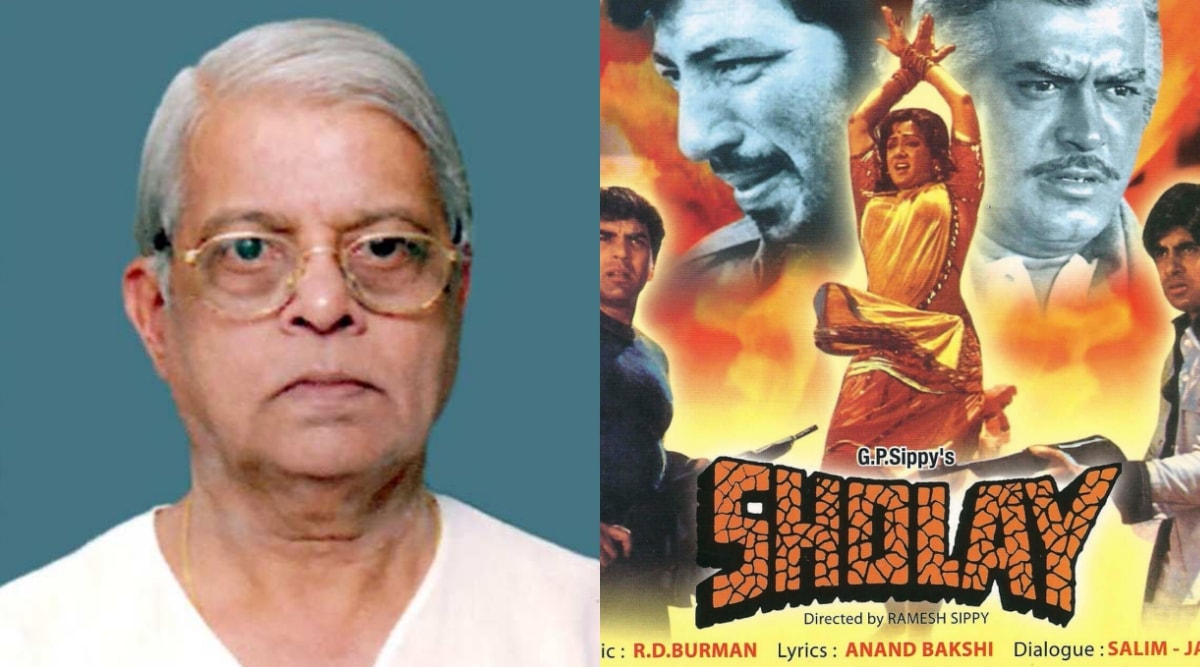 Diwakar Karkare, was the name behind iconic posters, banners and booklets for films from the 1960s to the 1980s, such as Sholay (1975), Deewar (1975), Amar Akbar Anthony (1977) and Jaane Bhi Do Yaaro (1983). (Photo: Twitter/ Dr Umesh Karkare)
Diwakar Karkare, was the name behind iconic posters, banners and booklets for films from the 1960s to the 1980s, such as Sholay (1975), Deewar (1975), Amar Akbar Anthony (1977) and Jaane Bhi Do Yaaro (1983). (Photo: Twitter/ Dr Umesh Karkare) BOLLYWOOD’S YESTERYEAR publicity designers were responsible for giving heroes and villains a larger-than-life appeal. One such leading artist, Diwakar Karkare, was the name behind iconic posters, banners and booklets for films from the 1960s to the 1980s, such as Sholay (1975), Deewar (1975), Amar Akbar Anthony (1977) and Jaane Bhi Do Yaaro (1983). Karkare died in Mumbai on January 5 due to age-related complications at the age of 90.
Karkare belonged to Mumbai’s Shivaji Park area, where he grew up, and went on to set up his studio after graduating from Sir JJ School of Art. His daughter, Uttara Samant, said he was trained in both commercial and fine arts, but when it came to film poster designs, he was a purist, using paints and brushes.
The first film that Karkare loaned his artistry to could have been Bandini (1963), directed by Bimal Roy. When Amitabh Bachchan was launched into his ‘Angry Young Man’ avatar, Karkare is credited with bringing the image to life in his publicity material. His work for Deewar is among his most memorable, with its pyramid arrangement of yellow faces, Bachchan’s at the apex and standing out in aggressive shades of pink.
His son Umesh Karkare said his father would often pitch to distributors and producers on how to convey entire storylines in one poster. Bachchan’s fiery red shirt in another poster for Deewar was the result of such a pitch.
In his heyday, Karkare could be ready with publicity material for up to five films every week. Though he worked with oil paints and water colours mostly, he was versatile with a variety of techniques and materials. For Kala Patthar (1979), another Bachchan starrer directed by Yash Chopra, Diwakar used charcoal to convey the sense of the film’s title. He sometimes employed a distinctive technique, which has caught the attention of collectors and film historians, called “over-painting” for which he used palette knives to paint over photographic images, creating a dramatic and vivid effect –– a style he used for Bachchan’s ‘Angry Young Man’.
Many of Karkare’s publicity art has been lost in the churn of Bollywood’s theatre shows. The Victoria and Albert Museum in London has a collection of some poster prints, while it is possible that producers and distributors have originals that the artist ensured were framed.
Karkare himself did not own the copyright for his works, especially since such contracts were not drawn in Bollywood back then. The family, at present, only owns the original art for Silsila (1981).
With the publicity industry’s changing requirements and digital takeover, Karkare’s art was relegated to history. Rather than make the shift, disappointed he closed his studio in the late 1980s, with Chandni (1989) possibly being his last commission. He retired to Pune, but continued making portraits for individuals and institutions.
Samant said her father made portraits of ornithologist Salim Ali for Bombay Natural History Society, Marathi authors and leaders of the Samajwadi Party. “He was a portrait master, a legend,” she said.